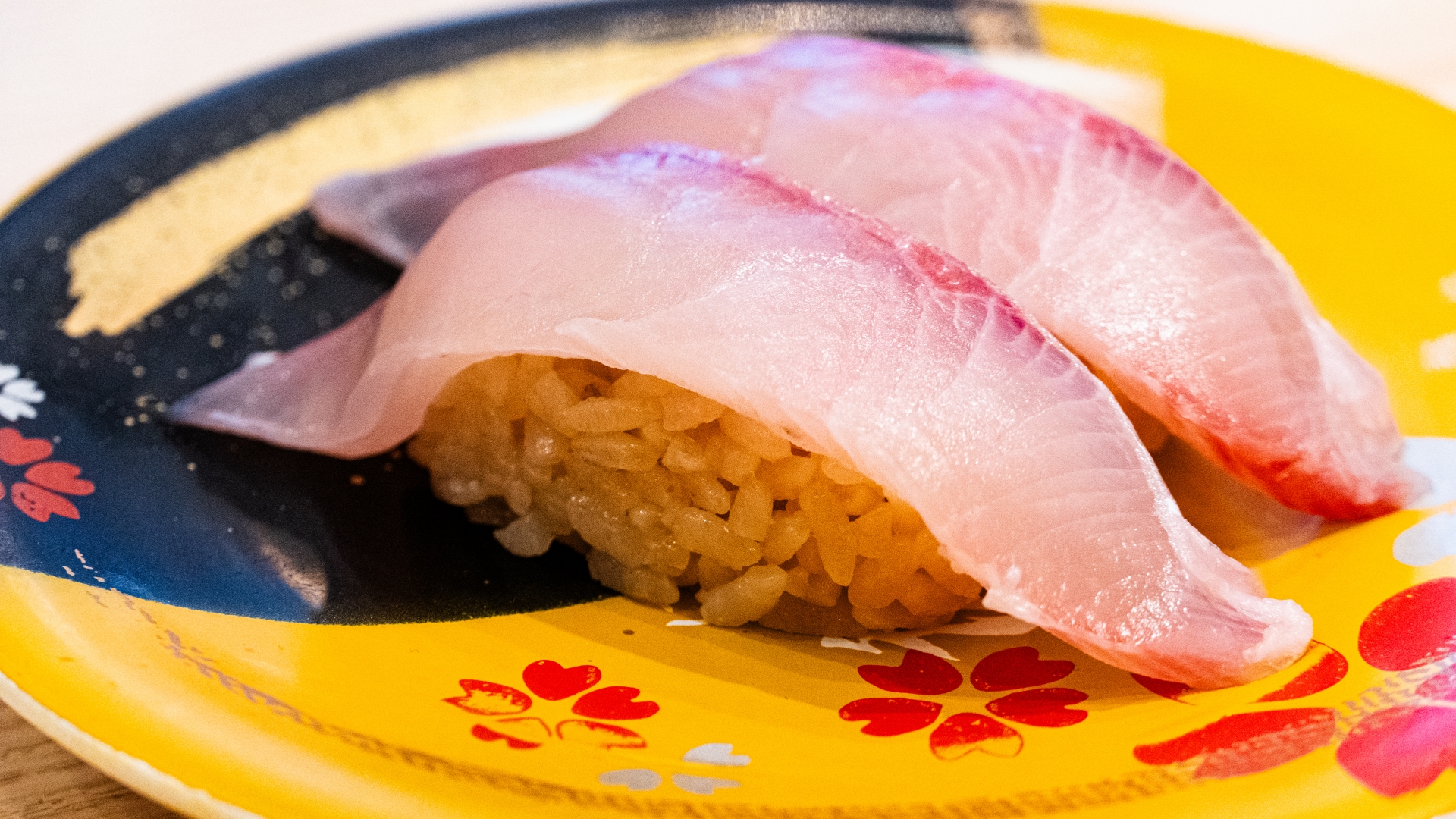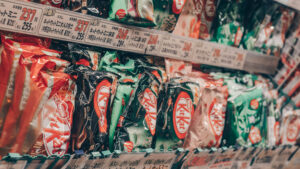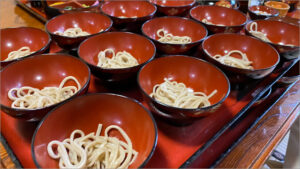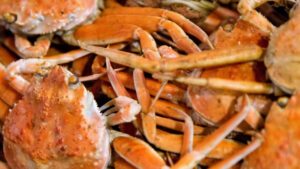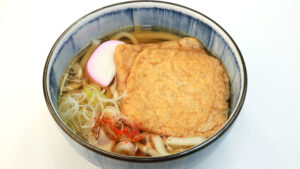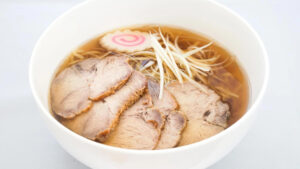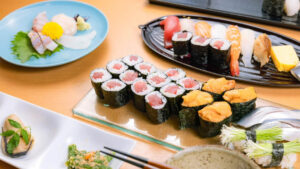Japanese conveyor belt sushi is convenient, delicious, and extremely popular among tourists! However, you might have many questions, such as ‘How do I place an order?’, and ‘How do I pay?’. In this article, I will explain the characteristics of Japan’s conveyor belt sushi chains and how to use them in detail.
Contents
What is Japanese Conveyor Belt Sushi (回転寿司, Kaitenzushi)?
What Are the Characteristics of Japanese Conveyor Belt Sushi?
Japanese conveyor belt sushi is not just fast food—it’s a unique food culture that allows people to enjoy authentic sushi easily and affordably.
The concept originated in 1958 in Osaka, when the first kaitenzushi restaurant, “Mawaru Genroku Sushi No.1”, opened. It was designed as an efficient way to serve sushi to a large number of customers. Over time, conveyor belt sushi has evolved with technological advancements, making it even more convenient and accessible for both locals and tourists.
Enjoying Sushi at an Affordable Price
One of the biggest attractions of Japanese conveyor belt sushi is that you can enjoy fresh sushi at a reasonable price, without having to visit an expensive high-end sushi restaurant.
With prices starting at around 100 yen per plate, you can enjoy classic sushi toppings like tuna, salmon, and shrimp, as well as unique creative sushi and regional specialties that vary by chain.
A Casual Dining Experience for Everyone
One of the great things about conveyor belt sushi is its casual and welcoming atmosphere, making it enjoyable for families with children, couples, and even solo diners.
Many kaitenzushi chains offer online reservations, allowing you to avoid long wait times and enter smoothly, even during peak hours.
Pricing System
In conveyor belt sushi restaurants, the price of sushi is typically determined by the color of the plate. However, in recent years, more restaurants have shifted to a touchscreen ordering system with express lanes delivering sushi directly to customers.
This change is due to two main reasons
- Fewer customers were choosing sushi from the conveyor belt, preferring freshly made orders instead.
- The impact of COVID-19, which led many restaurants to stop placing sushi on the conveyor belt for hygiene reasons.
When ordering via the touchscreen, the prices are clearly displayed, so you don’t need to memorize the plate colors. However, some restaurants still use the color-coded plate system, so it’s a good idea to check the pricing chart beforehand!
How Touchscreen Ordering and Conveyor Belt Systems Work
Japanese conveyor belt sushi restaurants use advanced ordering and delivery systems to provide a smooth and enjoyable dining experience.
At most restaurants, each table or counter seat is equipped with a touchscreen, allowing customers to order sushi directly. Many places offer language options, such as English, Chinese, and Korean, making it easier for tourists to navigate the menu. Once an order is placed, the sushi is often delivered via a special express lane, separate from the regular conveyor belt, ensuring quick and fresh service.
The traditional conveyor belt system, which is the symbol of kaitenzushi, continuously moves sushi plates around the restaurant. Customers can simply take whatever they like from the belt. However, to keep the sushi fresh and prevent it from drying out, chains like Sushiro and Kura Sushi have introduced protective covers over the sushi plates.
In addition to the regular conveyor belt, many restaurants have introduced express lanes, often referred to as the “sushi shinkansen” system, where ordered sushi is delivered directly to the customer’s seat. This system, widely adopted by Kura Sushi, Sushiro, and Hama Sushi, ensures hygiene and efficiency by keeping personal orders separate from the general conveyor belt.
Popular Conveyor Belt Sushi Chains in Japan
Kura Sushi (くら寿司)
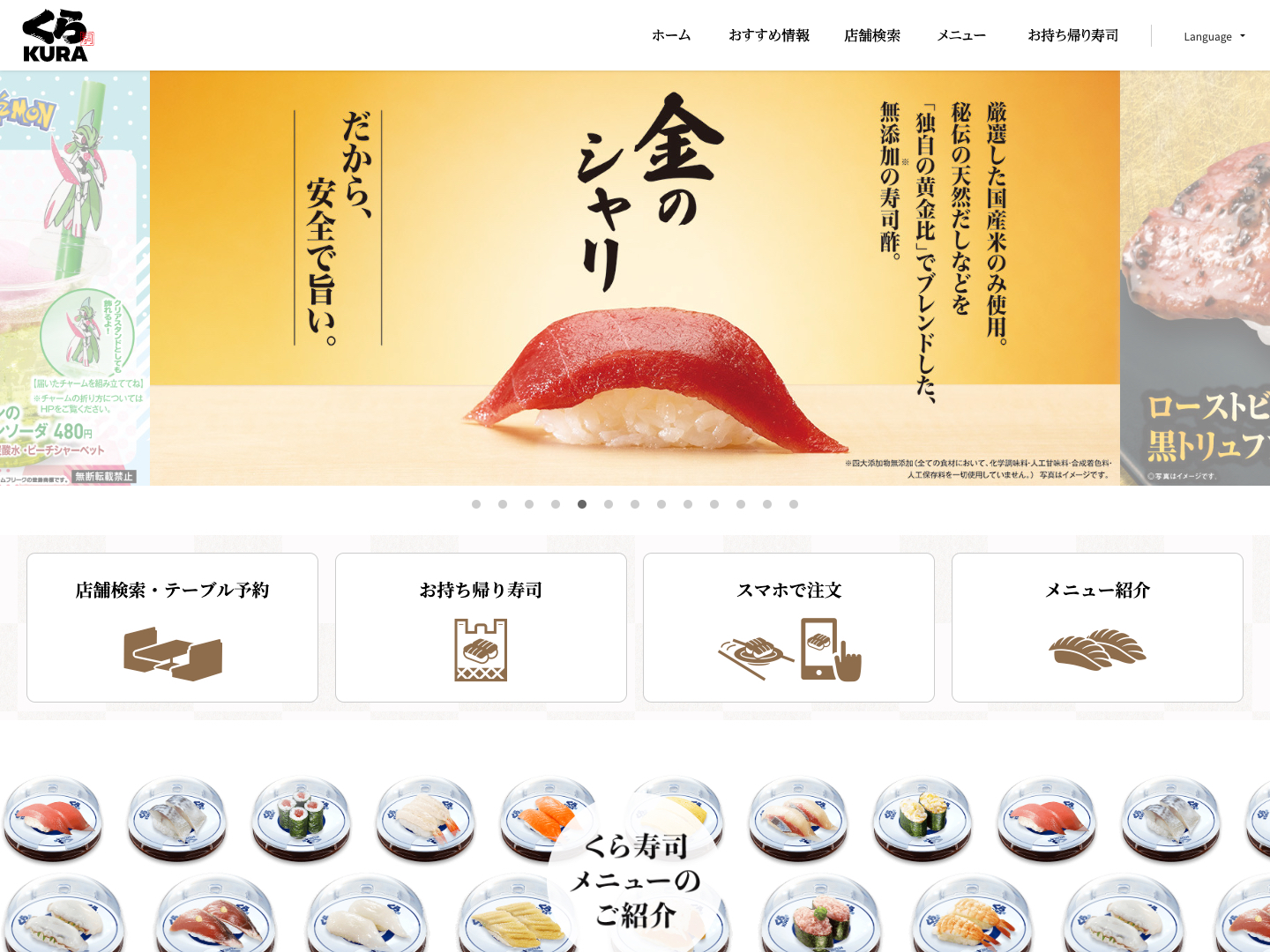
Kura Sushi Website (https://www.kurasushi.co.jp/)
Kura Sushi is a well-known conveyor belt sushi chain in Japan, offering a unique and entertaining dining experience.
The price per plate starts at 115 yen (tax included), and customers can order sushi using a touchscreen panel or pick it directly from the conveyor belt.
One of Kura Sushi’s standout features is its freshness management system. All sushi plates on the conveyor belt are covered with a transparent dome called “Sendo-kun”, which protects the sushi from dust and airborne particles, ensuring hygiene and freshness.
Another unique aspect of Kura Sushi is its “Bikkura Pon!” game, a fun feature enjoyed by both children and adults. When customers finish their sushi, they can insert their empty plates into a slot at the table. For every five plates, a digital game starts, offering a chance to win a capsule toy.
Sushiro (スシロー)
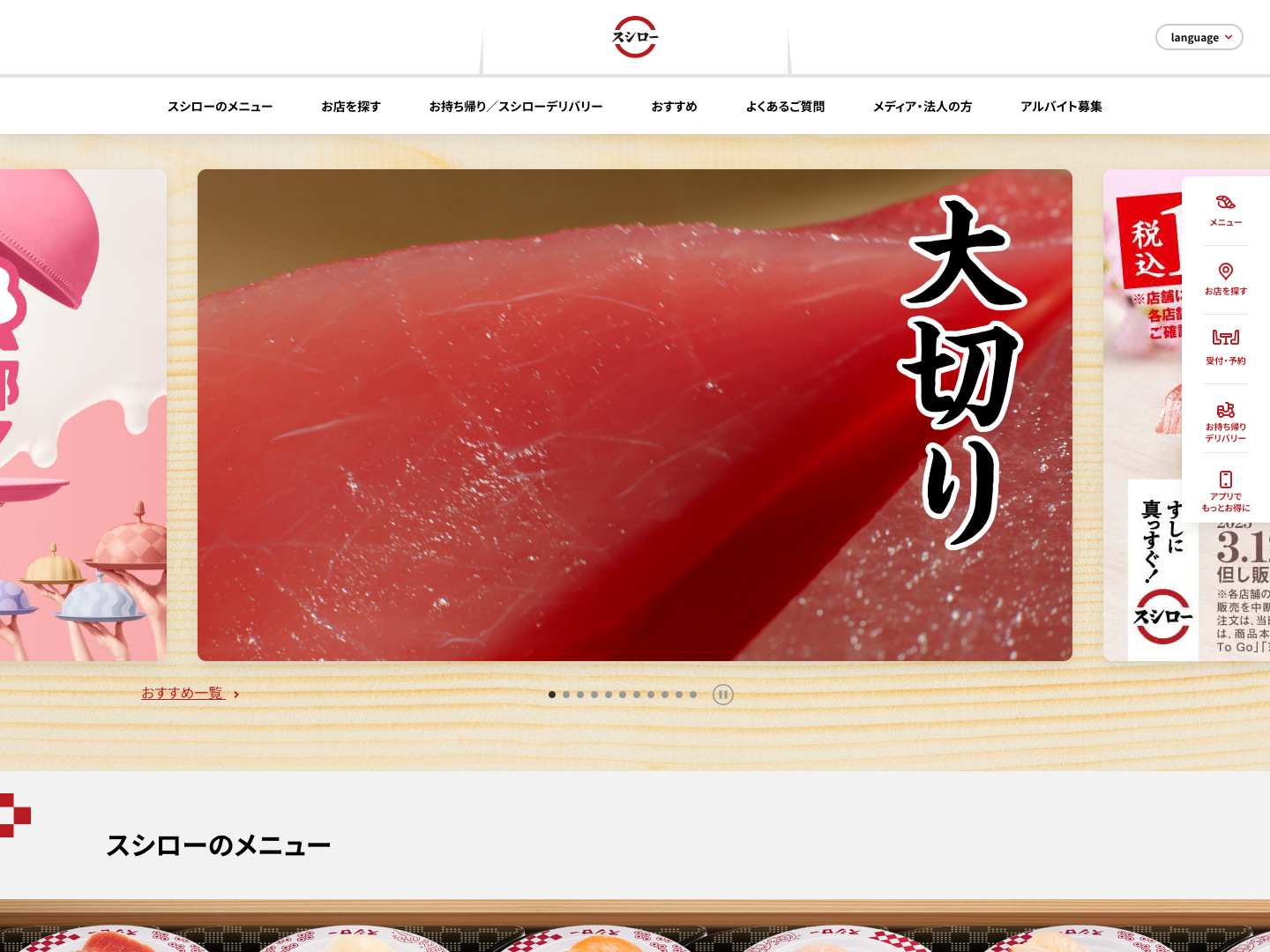
Sushiro Website (https://www.akindo-sushiro.co.jp/)
Sushiro is one of Japan’s largest and popular conveyor belt sushi chains, offering high-quality sushi at an affordable price. The price per plate starts at 120 yen (tax included), and customers can either order using a touchscreen panel or pick sushi directly from the conveyor belt.
In addition to sushi, Sushiro is well known for its wide variety of side dishes, including ramen, tempura, and desserts, making it a favorite among families, young people, and sushi lovers alike.
The touchscreen ordering system is the primary way to order sushi, and after placing an order, sushi is delivered via a special express lane for freshness and hygiene.
Hama Sushi (はま寿司)

Hama Sushi Website (https://www.hama-sushi.co.jp/)
Hama Sushi is a popular conveyor belt sushi chain in Japan, known for its affordable prices and unique selection of condiments. The price per plate starts at 110 yen (tax included), and customers can either order using a touchscreen panel or pick sushi directly from the conveyor belt.
One of Hama Sushi’s distinctive features is its variety of soy sauces, allowing customers to enjoy different flavors depending on their preference. Options include special dashi soy sauce, Kanto-style dark soy sauce, and Hokkaido kelp soy sauce, each offering a unique taste to complement the sushi.
The ordering system primarily relies on touchscreen panels, and customers can pick up their sushi as it moves along the conveyor belt.
Kappa Sushi (かっぱ寿司)
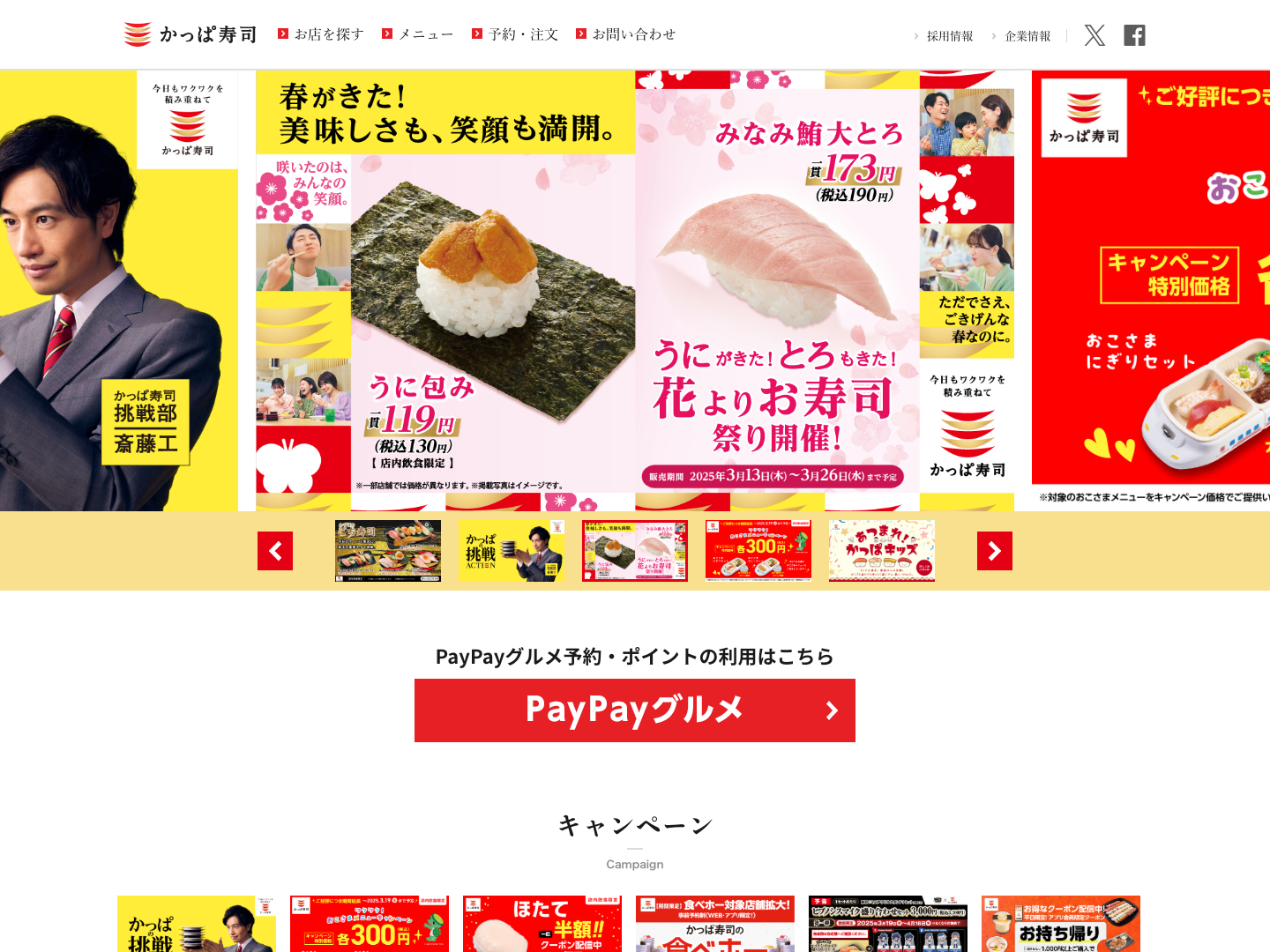
Kappa Sushi Website (https://www.kappasushi.jp/)
Kappa Sushi is a well-known conveyor belt sushi chain in Japan, offering a wide variety of affordable sushi and side dishes. The price per plate starts at 110 yen (tax included), and customers can either order using a touchscreen panel or pick sushi directly from the conveyor belt.
In addition to sushi, Kappa Sushi is popular for its extensive side menu, which includes ramen, curry, and desserts, making it a great choice for those looking for more than just sushi.
Customers can place orders through the touchscreen system, while still having the option to grab sushi from the conveyor belt.
How to Use a Conveyor Belt Sushi Restaurant in Japan
Visiting a kaitenzushi (conveyor belt sushi) restaurant for the first time? Here’s a step-by-step guide to help you enjoy your meal smoothly!
I will use Sushiro as a reference.
Entering the Restaurant & Getting a Seat
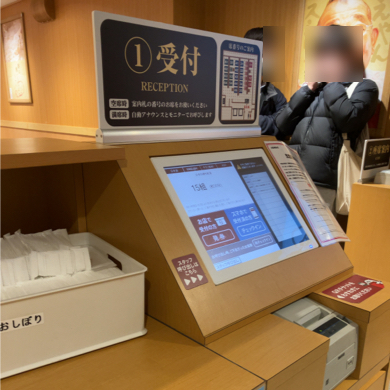
When you arrive at Sushiro, you will usually need to get a numbered ticket from the self-service machine.
Near the entrance, there is a machine labeled “①受付 RECEPTION.”
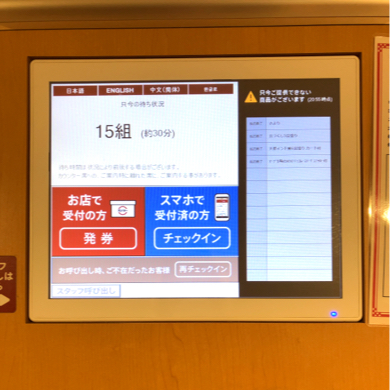
Use the touchscreen to issue a reception ticket.
At the top of the screen, there’s a language selection button—switch it to your preferred language before proceeding.
In this photo, the screen displays the following:
“15組(約30分)” → 15 groups waiting (approx. 30 minutes)
“お店で受付の方 [発券]” → For customers registering at the store, Issue ticket
“スマホで受付済の方 [チェックイン]” → For customers who have already registered via smartphone, Check-in
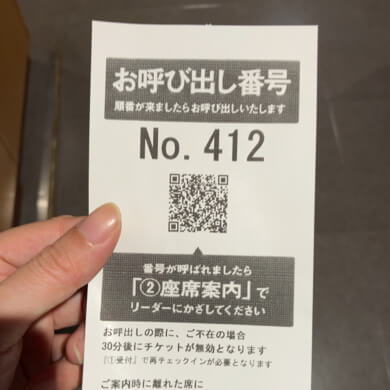
When you use the reception machine, a numbered ticket will be issued. Please wait until your number is called.
Note: This number is not your seat number.
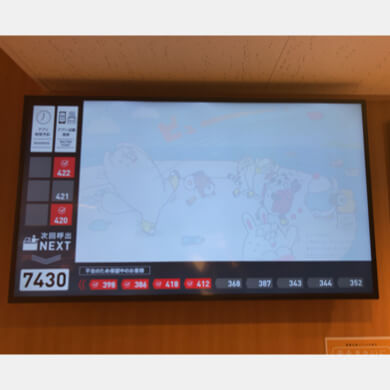
You can check if your number has been called through the announcement and the screen inside the store.
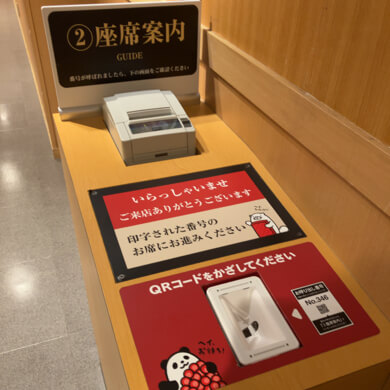
When your number is called, please go to the seat ticket machine. Hold your QR code over the scanner in the front, and your seat ticket will be printed from the machine in the back.
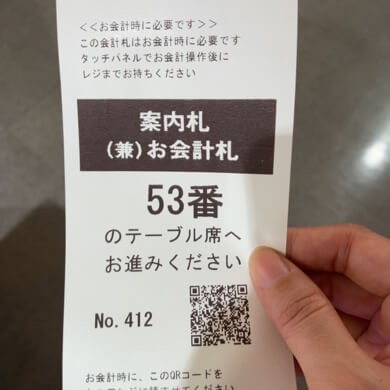
Your seat ticket has been issued. It says “53,” so please find seat number 53.
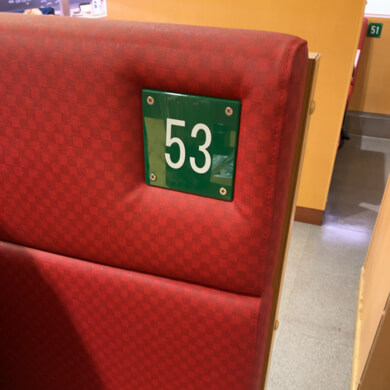
Please take a seat with the number “53” on it. As shown in the photo, the seat numbers are clearly displayed on the seats or on the wall above, so they should be easy to find.
Frequently Asked Questions
Do I Need to Tip at a Conveyor Belt Sushi Restaurant?
No, tipping is not required in Japan. Japan does not have a tipping culture, and this applies to conveyor belt sushi restaurants as well. The price you see on the menu is the final amount you need to pay.
What is “Gari” (ガリ)?
Gari (ガリ) is thinly sliced pickled ginger that is commonly served with sushi. It has a slightly sweet and tangy flavor and is usually pale yellow or light pink in color.
By eating gari between bites of sushi, you can refresh your palate and better enjoy the flavors of the next piece.
At conveyor belt sushi restaurants, gari is usually available as an all-you-can-eat condiment, allowing you to take as much as you like!
Can I Bring Children to a Conveyor Belt Sushi Restaurant?
Of course! Conveyor belt sushi restaurants are very family-friendly, and children are welcome.
For example, at Sushiro, there are several services designed for kids.
- Child-sized chairs are available for small children.
- Kid-friendly plates and cutlery are provided.
- The touchscreen menu includes a kids’ section, displaying recommended dishes for children.
- When ordering dishes like udon, you can request modifications such as removing green onions.
- Hosomaki (thin sushi rolls) can be cut into smaller pieces to make them easier for kids to eat.
- Drinks can be served with a straw upon request.
If you have any other questions, feel free to leave a comment and let me know!
